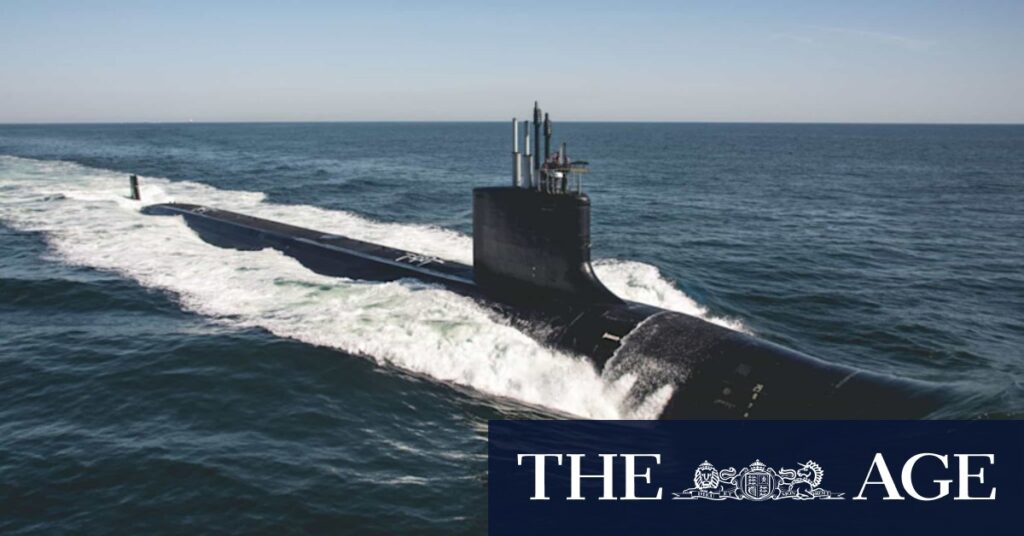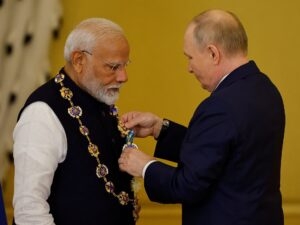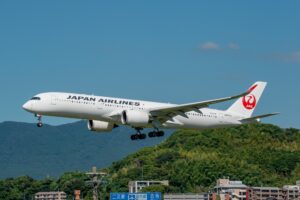
Australian officials are bracing for the United States to solidify its presence at the nation’s largest naval base as part of a strategic review of the AUKUS pact. This move aims to bolster American influence across the Indo-Pacific, preparing for potential tensions with China.
During a White House meeting between President Donald Trump and Prime Minister Anthony Albanese, US Navy Secretary John Phelan highlighted the need to resolve “ambiguities” in the original AUKUS plan. The meeting underscored Trump’s strong support for AUKUS, which includes selling at least three nuclear-powered submarines to Australia. However, changes are anticipated following a review led by senior Pentagon official Elbridge Colby, expected by year’s end.
Strategic Importance of HMAS Stirling
Senior Australian officials speculate that one ambiguity involves establishing a permanent presence of up to four US nuclear-powered submarines at HMAS Stirling near Perth by 2027. This base, home to most of Australia’s frigates and submarines, is strategically crucial for the US due to its proximity to key Asian nations, enhancing its competitive edge against China in the Indian Ocean.
The plan, known as Submarine Rotational Force West (SRF-West), could see up to 1,000 American troops and their families stationed in Perth, marking the second-largest US military presence in Australia after Darwin. Phelan emphasized the rotational force’s critical role in projecting power across the Indo-Pacific during the White House discussions.
Australian Reactions and Potential Changes
Prime Minister Albanese, speaking to reporters before leaving Washington D.C., acknowledged awareness of potential changes sought by the US but refrained from preemptive announcements. The Australian government remains optimistic about collaborating with any recommendations from the Colby review.
Former senior defense official Mike Pezzullo suggested that solidifying the US Navy’s presence in Western Australia is likely among the ambiguities Phelan referred to. Pezzullo, who authored the 2009 defense white paper, noted, “Our government tends to emphasize that Force West is about building up our own submarine capability, but when the Americans talk about it, they are explicit that it’s about power projection.”
“They have long coveted the idea of an operating location like this and they are not going to want to give it up,” Pezzullo added.
International Concerns and Future Prospects
The AUKUS arrangement has faced criticism from China, with Foreign Ministry spokesman Guo Jiakun stating, “We oppose bloc confrontation and anything that increases the risk of nuclear proliferation and exacerbates arms race.”
Meanwhile, the Australian Submarine Agency’s fact sheet on SRF-West clarifies that it will not serve as a military base for US or UK navies. “Australia has a longstanding bipartisan policy of no foreign bases on Australian soil,” the agency asserts, emphasizing that the project aligns with this policy.
Naval expert Jennifer Parker, an adjunct fellow in naval studies at UNSW, believes the US views SRF-West as a significant long-term benefit of AUKUS. “It’s hard to see them viewing it as a short-term arrangement – they will want to be there for the long term,” Parker stated.
Looking Ahead
The potential entrenchment of US naval forces in Australia under the AUKUS pact represents a strategic pivot in the Indo-Pacific region. As the Pentagon review progresses, the implications for regional security dynamics and international relations will be closely monitored. The outcome of these discussions could redefine the military landscape in the Indo-Pacific for decades to come.





